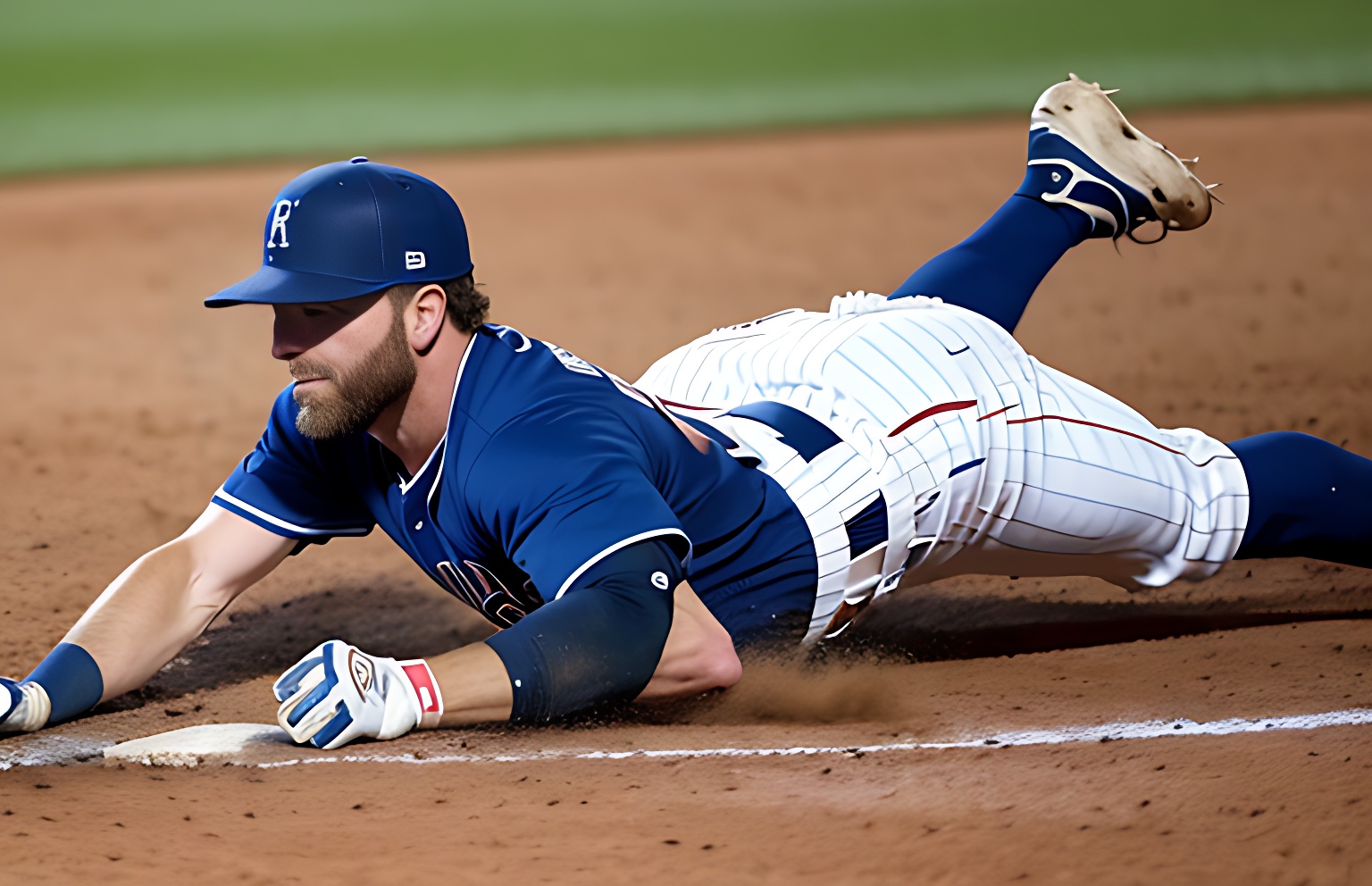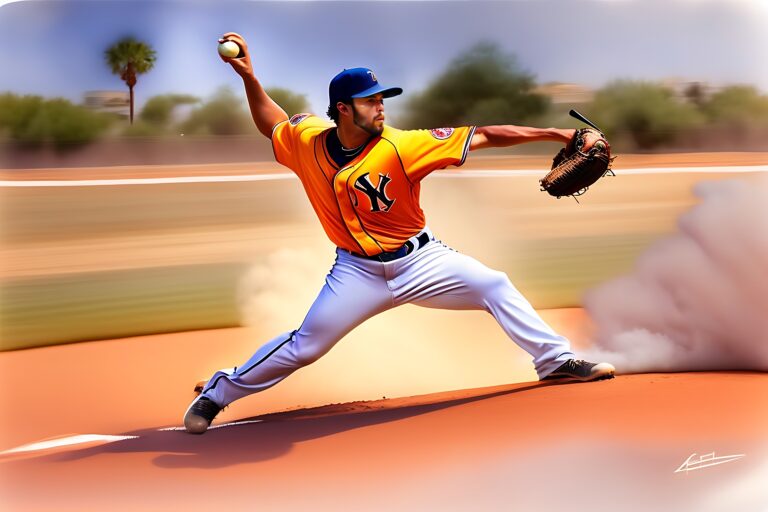Is Catching Bad for Your Knees?
When it comes to the demanding position of a catcher in a baseball game, there’s no denying the immense stress it places on the knees. Whether you’re an aspiring catcher or a concerned player, understanding the potential risks involved is crucial. Are catchers more susceptible to knee injuries? The answer is yes.
Catching, with its frequent squatting and sudden movements, makes catchers particularly vulnerable to a range of knee issues. From meniscus tears to muscle strains and tendonitis, these injuries are all too common among catchers. But what exactly causes them, and how can they be prevented or managed?
In this article, we delve deep into the world of catchers and their knees. We explore the specific knee injuries catchers face, examining their causes and potential treatments. Whether you’re a player, coach, or simply curious about the topic, join us as we unravel the truth about the impact of catching on knee health. Let’s ensure you have the knowledge to protect yourself and make informed decisions when it comes to this high-stress position. You may read also How Do MLB Playoffs Work
What happens to your knees when you catch them?
When you catch, or suddenly stop the movement of your body, several things happen to your knees to help stabilize and protect them. Catching typically refers to an abrupt deceleration or change in direction, such as when you quickly change your running direction or land from a jump. Here’s what occurs in your knees during this process.
Firstly, your quadriceps muscles, located at the front of your thighs, contract forcefully to slow down your body’s movement. This contraction helps to absorb the impact and reduces the stress on your knees. Simultaneously, your hamstrings, located at the back of your thighs, also engage to provide additional support and prevent excessive strain on the knee joint.
Next, the ligaments in your knees, particularly the anterior cruciate ligament (ACL) and the medial collateral ligament (MCL), play a crucial role in maintaining stability. These ligaments help to keep the bones of your knee joint aligned and prevent excessive twisting or sideways movement.
Additionally, the menisci, which are C-shaped cartilage pads located between the femur and tibia, act as shock absorbers. They help distribute the forces applied to the knee and enhance stability during sudden movements.
When you catch, your body employs a combination of muscular contractions and ligamentous support to protect your knees from excessive strain and maintain stability. However, it is important to note that sudden, forceful catches or repeated improper landings can still potentially lead to knee injuries, such as ligament tears or meniscal damage.
Common knee injuries in Catchers
Common knee injuries in catchers can occur due to the demands and repetitive motions involved in their position. Catchers often experience a variety of knee-related issues, including strains, sprains, tears, and overuse injuries. These injuries can result from the stress placed on the knees during squatting, quick movements, and the repetitive act of getting up and down behind the plate.
One common knee injury in catchers is patellar tendinitis, also known as “catcher’s knee.” This condition involves inflammation and irritation of the patellar tendon, which connects the kneecap to the shinbone. Catchers frequently put significant strain on this tendon when repeatedly squatting and standing up during games or practices.
Another common knee injury is a meniscus tear, which can occur when the knee joint twists or rotates forcefully. The meniscus is a C-shaped piece of cartilage that acts as a cushion between the thigh bone and shinbone. Catchers can sustain meniscus tears due to the sudden movements and lateral shifts involved in blocking pitches or making throws.
Furthermore, catchers are also prone to developing anterior cruciate ligament (ACL) injuries. The ACL is one of the major ligaments in the knee that provides stability. Catchers may experience ACL sprains or tears when they hyperextend their knee, twist it forcefully, or experience direct impact, such as during collisions at home plate.
To prevent knee injuries, catchers can focus on maintaining proper technique, including squatting with good form, using proper padding and protective gear, and implementing a thorough warm-up and stretching routine. Additionally, strength and conditioning exercises that target the muscles around the knee can help improve stability and reduce the risk of injury. It is essential for catchers to listen to their bodies, rest when needed, and seek medical attention for any persistent knee pain or discomfort. You may read the guide on What Does WAR Mean in Baseball
Factors that increase the risk of knee injuries in catchers
Knee injuries are a common concern for catchers in baseball and softball due to the demanding nature of their position. Several factors contribute to an increased risk of knee injuries in catchers.
- Repeated squatting: Catchers spend a significant amount of time in a squatting position, placing excessive stress on the knees. The repeated strain can lead to overuse injuries such as patellofemoral pain syndrome or patellar tendinitis.
- Blocking pitches: Catchers frequently have to block pitches in the dirt, which involves forcefully dropping to their knees to prevent the ball from passing. This sudden and repetitive impact can lead to knee contusions, meniscus tears, or ligament sprains.
- Quick lateral movements: Catchers often need to make quick lateral movements to catch throws or tag baserunners. These abrupt changes in direction put stress on the knees and can increase the risk of ligament injuries, such as anterior cruciate ligament (ACL) tears.
- Collisions at home plate: Catchers are vulnerable to collisions with baserunners during plays at home plate. These high-energy impacts can result in knee injuries, including ligament tears, dislocations, or fractures.
- Poor technique: Incorrect squatting form or improper landing mechanics can contribute to knee injuries in catchers. Insufficient core and lower extremity strength, along with inadequate flexibility, may further increase the risk.
To mitigate the risk of knee injuries, catchers should prioritize proper conditioning, including strength training and flexibility exercises. They should also focus on maintaining good technique, using proper protective gear, and implementing injury prevention strategies such as adequate rest and recovery. Regular communication with coaches and trainers can also help identify and address any issues that may increase the risk of knee injuries.
Preventing knee injuries in Catchers
Preventing knee injuries is crucial for catchers in order to maintain their performance and long-term health on the field. Catchers often experience significant stress on their knees due to frequent squatting, sudden movements, and repetitive actions during games and practices. Here are some key strategies to help prevent knee injuries in catchers:
- Proper conditioning: Catchers should engage in a comprehensive strength and conditioning program that includes exercises to improve lower body strength, flexibility, and stability. This helps to build the muscles around the knee joint and enhance its stability.
- Correct technique: Catchers should focus on using proper squatting techniques and mechanics to minimize stress on the knees. They should receive coaching on how to distribute their weight evenly, maintain good posture, and use their leg muscles efficiently during crouching and rising.
- Protective gear: Wearing proper protective gear, such as knee savers or knee pads, can provide cushioning and support to the knees during extended periods of squatting. These accessories can help reduce the strain on the joint and minimize the risk of injury.
- Rest and recovery: Adequate rest and recovery periods are essential for catchers to allow their knees to heal and prevent overuse injuries. Catchers should listen to their bodies and take breaks as needed, especially if they experience pain or discomfort.
- Regular stretching and mobility exercises: Catchers should incorporate regular stretching and mobility exercises into their routine to maintain flexibility in the knees and surrounding muscles. This helps to improve the joint range of motion and reduce the likelihood of strains or tears.
By implementing these preventive measures, catchers can significantly reduce the risk of knee injuries and maintain their performance and longevity in the game. It is always advisable to consult with a sports medicine professional or a qualified coach for personalized guidance and advice.
Treatment interventions for catching injuries
Catching injuries can be common among athletes who participate in sports that require a lot of hand-eye coordination, such as baseball, basketball, or volleyball. These injuries can range from minor strains to more severe fractures or dislocations. Treatment interventions for catching injuries typically focus on reducing pain and inflammation, promoting healing, and restoring the full range of motion and function to the affected area.
One of the first steps in treating a catching injury is to rest the affected area and avoid any activities that may aggravate the injury. Ice therapy can be used to reduce pain and swelling, and compression bandages or braces can be used to provide support and limit movement. Nonsteroidal anti-inflammatory drugs (NSAIDs) may also be prescribed to help manage pain and inflammation.
Physical therapy can also be an effective intervention for catching injuries. A physical therapist can develop a customized exercise program to help improve strength, flexibility, and range of motion in the affected area. In some cases, manual therapy techniques may also be used to help reduce pain and improve joint mobility.
If a catching injury is more severe, surgery may be required to repair any damaged tissues or bone. After surgery, physical therapy and rehabilitation will typically be necessary to help restore full function to the affected area. You may check also What Is WRC+ in Baseball
How do you strengthen your knees for catching?
To strengthen your knees for catching, it’s important to focus on a combination of exercises that target the muscles around the knee joint, as well as overall leg strength and stability. Here are some exercises and tips to help you strengthen your knees:
- Quadriceps strengthening: Perform exercises like squats, lunges, and leg presses to target the quadriceps muscles. These exercises help stabilize the knee joint and improve its overall strength.
- Hamstring strengthening: Engage in exercises like deadlifts, hamstring curls, and glute bridges to strengthen the hamstrings. Strong hamstrings provide support and stability to the knee joint.
- Calf strengthening: Incorporate exercises such as calf raises and standing heel raises to strengthen the calf muscles, which play a role in maintaining knee stability.
- Balance and stability exercises: Perform exercises that challenge your balance and stability, such as single-leg stands or Bosu ball exercises. These exercises improve proprioception and help prevent knee injuries.
- Low-impact activities: Engage in low-impact activities like swimming, cycling, or using an elliptical machine. These activities provide cardiovascular benefits without placing excessive stress on the knees.
- Proper warm-up and stretching: Always warm up before physical activity and stretch your muscles, including your quadriceps, hamstrings, and calves, to prevent muscle imbalances and reduce the risk of knee injuries.
Remember to consult with a healthcare professional or a certified trainer before starting any new exercise program, especially if you have pre-existing knee conditions or injuries. They can provide personalized advice and modifications based on your individual needs.
Conclusion
In conclusion, while there is a common belief that catching is bad for your knees, the evidence does not support this notion. Catching activities, such as in sports like baseball or softball, involve quick movements and occasional impact on the knees. However, when performed with proper technique and in moderation, catching is not inherently harmful to the knees.
In fact, regular physical activity, including catching, can strengthen the muscles around the knees and improve overall joint stability. It’s important to maintain good form, warm up properly, and listen to your body to prevent any potential knee injuries. You may read the guide on Why Are Umpires Called Blue
FAQs
How do catchers not ruin their knees?
Catchers use various techniques and equipment to minimize the strain on their knees. They wear well-padded shin guards to absorb impact and cushion their knees when crouching. They also work on developing strong leg muscles and use proper squatting mechanics to distribute weight evenly and protect their knees during gameplay.
How do catchers keep their knees healthy?
Catchers can keep their knees healthy by implementing proper techniques and equipment. This includes using quality knee pads and shin guards, maintaining good posture, and using proper footwork to reduce strain on the knees. Regular stretching, strengthening exercises, and adequate rest also contribute to knee health.
Which sport is worse for the knees?
Sports that involve a lot of jumping, twisting, and sudden stops and starts are generally considered worse for knees. Examples include basketball, soccer, football, and skiing. These activities put a lot of stress on the knee joint and can lead to injuries such as ACL tears, meniscus tears, and patellar tendinitis.
Do catchers have knee problems later in life?
Catchers in baseball often experience knee problems later in life due to the demanding nature of their position. Constant squatting, repetitive stress, and the strain of catching high-speed pitches can lead to knee injuries, such as osteoarthritis and tendonitis, which may cause long-term discomfort and mobility issues. Proper conditioning and injury prevention techniques are important for mitigating these risks.







